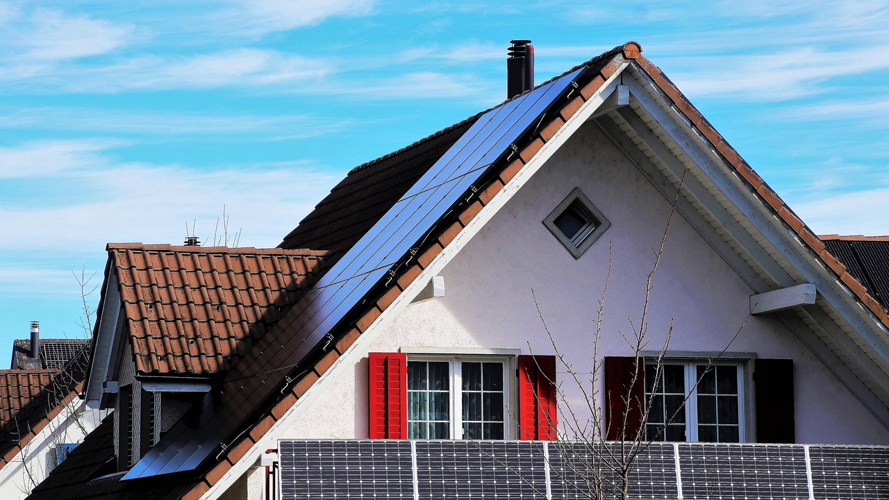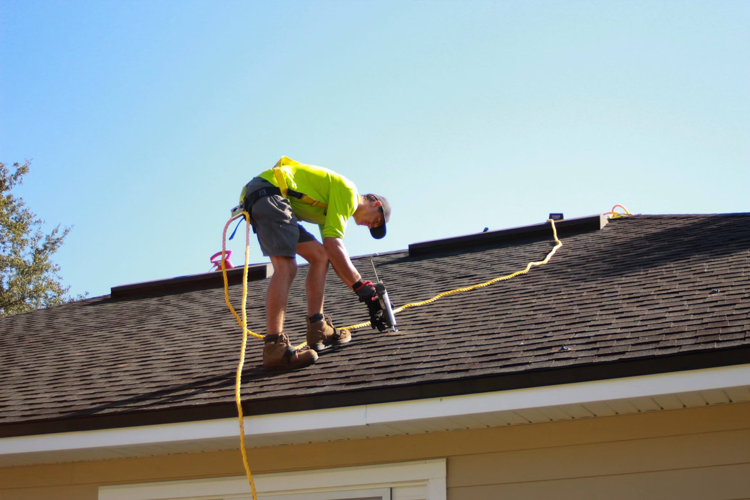Your roof is one of the most vital components of your home, providing protection from the elements and ensuring your safety and comfort. However, many homeowners neglect their roofs until problems arise, which can lead to costly repairs or even the need for a full replacement. Regular maintenance is key to extending the life of your roof and preventing issues before they escalate. Simple tasks, such as checking for damage, cleaning gutters, and ensuring proper ventilation, can make a huge difference in preserving the roof's integrity.

Inspect Your Roof Regularly
Inspect your roof at least twice a year, ideally in the spring and fall. Look for any visible signs of damage, such as missing shingles, cracks, or curling edges. If you notice any of these problems, address them quickly to prevent further damage. You should also check for debris, such as leaves, twigs, or branches, that might have accumulated on the roof. During the inspection, roofing professionals from East Penn Roofing believe it’s best to first assess the size and type of your roof while evaluating the roof and exterior of the property to determine the recommended services. If you're uncomfortable with climbing a ladder or getting on the roof, hiring a professional roofer to perform inspections is a good investment.
Clean Your Gutters and Downspouts
Clogged gutters are one of the leading causes of roof damage. When gutters become blocked with leaves and debris, water can’t flow properly and may back up onto the roof. This can lead to water damage, rotting wood, and even leaks. Clean your gutters at least twice a year, more often if you have overhanging trees near your home. Make sure the downspouts are clear and direct water away from the foundation of your house. Using a gutter guard system can also help reduce the frequency of gutter cleaning, but you should still check them periodically to ensure everything is working correctly.
Trim Overhanging Trees
Trees that are too close to your roof can pose a significant risk. Branches hanging over your roof can scrape against the shingles, causing damage over time. During storms or high winds, these branches can break off and fall onto your roof, potentially causing major damage. Regularly trimming trees and removing dead or overgrown branches can help prevent these issues. Keep branches at least five feet away from your roofline to reduce the risk of damage. Also, trimming trees can help prevent the buildup of leaves and debris on your roof, which can block proper drainage.
Check for Algae, Moss, and Lichen Growth
These growths can trap moisture against the shingles, causing them to deteriorate more quickly. Moss is particularly dangerous because it holds water against the roof and can lead to rot. If you spot any algae or moss growing on your roof, take action immediately. You can use a roof cleaning solution designed to kill these growths or hire a professional to clean the roof safely. Avoid using harsh chemicals or pressure washing, as these can damage the roofing material. Prevent future growth by ensuring proper drainage and considering a zinc or copper strip installation, which helps discourage the growth of moss and algae.
Regular Cleaning Is Key
You can use a roof cleaner specifically designed to target these growths or mix a solution of bleach and water to gently scrub away any visible algae or moss. Be sure to use a soft brush or a low-pressure setting on a hose to avoid damaging the shingles. Harsh scrubbing or pressure washing can strip the granules off asphalt shingles, which protects the roof and helps with water runoff. While cleaning, take care not to cause any damage to the surrounding areas, like your gutters or landscaping.
Ensure Proper Ventilation and Insulation
A well-ventilated attic is crucial for maintaining your roof’s longevity. Without proper ventilation, heat and moisture can build up in the attic, which can cause shingles to crack and warp. It can also lead to the growth of mold and mildew. Ensure that your attic has sufficient ventilation, including soffit vents and ridge vents, to allow airflow. Proper insulation is equally important, as it helps regulate the temperature inside your home, preventing heat from building up under the roof. Make sure your attic insulation is evenly distributed and not blocking vents.
Repair Small Problems Promptly
Address small roof issues as soon as you notice them. A small leak or a few missing shingles might seem like a minor issue, but if left unchecked, it can turn into a much larger and more expensive problem. If you spot any damage, take immediate action to repair it. For example, you can replace missing or damaged shingles on your own if you have the right tools and safety equipment. If you're unsure or uncomfortable, call a professional roofer. Addressing these issues quickly will help prevent more severe damage down the line.
Inspect Flashing and Seals
Flashing, which is the metal material around chimneys, vents, and skylights, plays a critical role in keeping your roof waterproof. Over time, flashing can become loose or damaged, allowing water to seep into the roof and causing leaks. Similarly, the seals around roof penetrations like vents or skylights may crack or deteriorate, leading to potential water damage. During your roof inspection, pay close attention to the condition of the flashing and seals. If you find any issues, repair or replace them as needed to maintain a waterproof barrier.
Be Mindful of Roof Warranties
Many roofing materials come with warranties that cover specific damages or defects for a set period, but these warranties often have certain conditions. To keep the warranty valid, manufacturers usually require regular inspections and maintenance, such as checking for leaks or replacing damaged shingles. Neglecting routine maintenance can void the warranty, leaving you with expensive repair costs if issues arise. When you perform inspections, keep a record of any work done to ensure you're compliant with warranty requirements. If your roof is still under warranty, make sure you follow the manufacturer’s maintenance guidelines and reach out for professional help when needed.

With a few simple maintenance tasks, you can avoid serious damage and extend the life of your roof for many years. Regular inspections, cleaning, and addressing minor issues promptly will go a long way in keeping your roof in good shape. Don’t forget to check your roof’s warranty terms and ensure that you’re following the guidelines to maintain coverage. Remember, a well-maintained roof not only protects your home but also adds to its value and energy efficiency. By investing a little time and effort into roof maintenance now, you’ll enjoy peace of mind and avoid expensive repairs down the road.




(0) comments
Welcome to the discussion.
Log In
Keep it Clean. Please avoid obscene, vulgar, lewd, racist or sexually-oriented language.
PLEASE TURN OFF YOUR CAPS LOCK.
Don't Threaten. Threats of harming another person will not be tolerated.
Be Truthful. Don't knowingly lie about anyone or anything.
Be Nice. No racism, sexism or any sort of -ism that is degrading to another person.
Be Proactive. Use the 'Report' link on each comment to let us know of abusive posts.
Share with Us. We'd love to hear eyewitness accounts, the history behind an article.